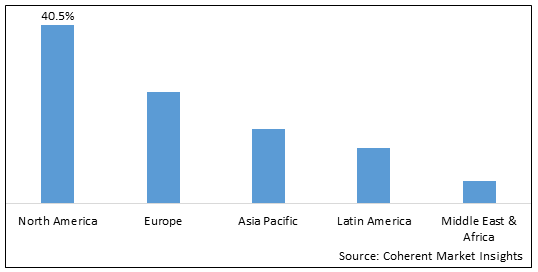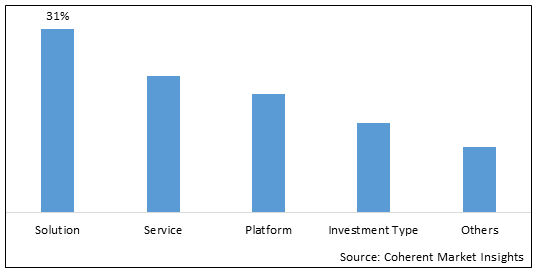Corporate Liquidity Management Market is estimated to be valued at USD 3.28 Bn in 2025 and is expected to reach USD 7.43 Bn in 2032, exhibiting a compound annual growth rate (CAGR) of 12.4% from 2025 to 2032. Corporate liquidity management refers to the process of monitoring and optimizing the working capital of organizations. It involves forecasting short-term cash positions, ensuring sufficient funds to meet financial obligations, and investing excess cash to generate returns. Corporate liquidity management solutions provide features such as cash flow forecasting, investment management, account receivables, account payables, and working capital optimization. The key advantages of corporate liquidity management include improved efficiency, better financial planning, reduced risks, and optimized returns on investments. The growth of the corporate liquidity management market is driven by the need for efficient cash management, the increasing complexity of treasury operations, and the growing adoption of cloud-based treasury solutions.
The corporate liquidity management market is segmented by component, deployment mode, organization size, end user, and region. By component, the market is segmented into solution (Cash Flow Forecasting, Account Receivable, Account Payable, Working Capital Optimization, and Others), services (Consulting, System Integration, Managed Service and Others), platform, and investment type (Short-term Investments, Money Market Funds, Treasury Bills, Certificates of Deposit, and Others). The solution segment accounted for the largest market share in 2025. The high market share of this segment is attributed to the growing need for comprehensive software solutions for treasury and risk management processes.
Corporate Liquidity Management Market Regional Insights:
- North America is expected to be the largest market for corporate liquidity management during the forecast period, accounting for over 40.5% of the market share in 2025. The growth of the market in North America is attributed to the high technology adoption, presence of major market players, developed economic landscape, and rising complexity of liquidity management.
- The Europe market is expected to be the second-largest market for corporate liquidity management, accounting for over 25.2% of the market share in 2025. The growth of the market in Europe is attributed to the increasing focus on digital transformation of banking and financial processes, modernization of corporate treasuries, and introduction of new regulations.
- The Asia Pacific market is expected to be the fastest-growing market for corporate liquidity management, with a CAGR of over 16.8% during the forecast period. The growth of the market in Asia Pacific is attributed to the rapidly growing corporate landscape, increasing investment in treasury management, and high adoption of fintech solutions.
Figure 1. Global Corporate Liquidity Management Market Share (%), by Region, 2025

To learn more about this report, Download Free Sample
Corporate Liquidity Management Market Drivers:
- Need to Improve Treasury Efficiency and Visibility: The need to improve treasury efficiency and get better visibility into cash positions is driving the demand for corporate liquidity management solutions. Treasurers are looking to automate manual processes, consolidate data into a single treasury system, and gain real-time insights into global cash flows. Solutions like cash flow forecasting, liquidity analytics, and account receivables and payables management optimize working capital and support data-driven decision-making. Their ability to connect with bank APIs (Application Programming Interface) also ensures efficiency.
- Increasing Complexity of Liquidity Management: With globalization, regulatory changes, and market volatility, corporate liquidity management has become extremely complex today. Organizations operate internationally across different tax regimes, currencies, and banking partners. Treasurers struggle to gain aggregated cash visibility and make strategic investment decisions. On the other hand, regulations like IFRS 9 and Basel III have increased compliance requirements. Advanced corporate liquidity solutions capable of handling this complexity are required.
- Integration of New Data Sources and Advanced Technologies: Innovation in corporate liquidity management is being driven by the integration of new data sources from bank APIs, ERP (Enterprise resource planning) systems, and accounting tools, as well as advanced technologies like AI, ML, big data analytics, and automation. Solutions powered by these can analyze large data sets to provide accurate forecasting, tailored investment recommendations, and strategic insights. They also allow treasuries to become data-driven.
- Access to Real-Time Data and Actionable Intelligence: The need for better access to real-time data for cash flow visibility along with intelligent analytics for actionable insights is driving the adoption of corporate liquidity platforms. Real-time visibility over account receivables and payables enables better working capital efficiency. Intelligent analytical models help treasurers forecast liquidity needs, identify investment opportunities, and take strategic decisions.
Corporate Liquidity Management Market Opportunities:
- Integration with ERP, Accounting, and Business Intelligence Platforms: There are significant opportunities in integrating corporate liquidity management solutions with ERP, accounting software, and centralized business intelligence platforms used by organizations. It provides a holistic view of the financial position and cash flows. With rising investment in digital transformation, this integration is increasing.
- Development of Liquidity-as-a-Service Solutions: Innovative treasury-as-a-service, liquidity-as-a-service, and cash flow-as-a-service solutions present new opportunities for vendors. These on-demand solutions integrate financial data, provide access to analytical models, and offer treasury process automation through cloud-based platforms on subscription basis. They reduce technology complexity for corporates.
- Rise of Open Banking Platforms: Regulatory initiatives like Payment Services Directive (PSD2) are enabling the open banking model globally. This is an opportunity for treasury solution providers to leverage open APIs from banks to build banking-as-a-service offerings that automate liquidity management across banking partners through a unified platform.
- Blockchain has the potential to address challenges like manual processes, data silos, delays, and cyber risks associated with inter-bank transactions. Corporate liquidity solution providers can capitalize on this by developing blockchain-based solutions for efficient management of intercompany transfers, loans, and payments.
Corporate Liquidity Management Market Report Coverage
| Report Coverage | Details | ||
|---|---|---|---|
| Base Year: | 2024 | Market Size in 2025: | USD 3.28 Bn |
| Historical Data for: | 2020 To 2024 | Forecast Period: | 2025 To 2032 |
| Forecast Period 2025 to 2032 CAGR: | 12.4% | 2032 Value Projection: | USD 7.43 Bn |
| Geographies covered: |
|
||
| Segments covered: |
|
||
| Companies covered: |
Citibank, Bank of America, JPMorgan Chase, Wells Fargo, HSBC, BNP Paribas, MUFG Bank, Mizuho Bank, SMBC, Barclays, Deutsche Bank, Credit Suisse, Morgan Stanley, Goldman Sachs, Royal Bank of Canada, Toronto-Dominion Bank, Banco Santander, Lloyds Banking Group, NatWest Group, Intesa Sanpaolo |
||
| Growth Drivers: |
|
||
| Restraints & Challenges: |
|
||
Uncover macros and micros vetted on 75+ parameters: Get instant access to report
Corporate Liquidity Management Market Trends:
- Automation of Treasury Processes using AI/ML (Artificial intelligence and machine learning): Artificial intelligence and machine learning are significant technology trends in the corporate liquidity management market. Adoption of AI/ML allows automation of cash flow forecasting, investment optimization, risk analysis, anomaly detection, and other processes. This reduces manual efforts, minimizes risks, and enhances productivity.
- Specialized Solutions for Specific Industries: Leading corporate liquidity management solution providers are developing specialized products tailored for specific industries like manufacturing, healthcare, construction, e-commerce, etc. This provides customized tools to manage industry-specific liquidity challenges and regulations.
- Integration of Sustainability in Liquidity Planning: With a growing focus on ESG metrics, integration of environmental and social factors along with governance in corporate liquidity planning is an emerging trend. Solutions are evolving to help manage sustainability-linked funding programs, track ESG data, and make sustainable investment decisions.
- Delivery through cloud-based Treasury Management Systems: Easy scalability, lower costs, and anytime access offered by cloud-based systems make them a preferred delivery model for modern corporate liquidity solutions. This trend is fueled by SaaS (Software-as-a-service) adoption across organizations. Cloud TMS provides a unified platform to manage end-to-end treasury functions, including liquidity management.
Corporate Liquidity Management Market Restraints:
- Data Privacy and Security Concerns: While the adoption of cloud treasury technology is increasing, the data privacy and security concerns associated with it are restraining the adoption, especially in highly regulated industries. Corporates are also hesitant about sharing sensitive financial data with fintechs. Addressing these concerns is critical for solution providers.
- High Deployment Costs for On-premise Solutions: Despite the benefits, the high costs and complexity associated with deploying advanced corporate liquidity solutions on-premise are restraining their adoption, especially among SMEs with limited treasury IT budgets. This demands the development of Lite SaaS models to drive affordability.
- Lack of Standardized Global Regulations: While regulations are tightening around corporate liquidity, they differ significantly across regions. Lack of standardized global regulations results in the complexity of managing liquidity across subsidiaries located worldwide. It creates demand for localized, configurable solutions.
Recent Developments:
New product launches:
- In March 2022, Citibank launched a new Sustainable Finance Solution to help clients align financing needs with sustainable business models. It provides sustainability-linked loans, green bonds, and tracks sustainability metrics.
- In January 2021, JPMorgan Chase introduced a new liquidity management portal providing real-time analytics, forecasting, and investment optimization for corporate clients. It simplifies treasury operations.
- In June 2020, Wells Fargo launched a commercial electronic payments solution enabling automation of accounts payable and receivable processes to optimize working capital.
Acquisition and partnerships:
- In October 2022, Bank of America partnered with HighRadius, a fintech company, to integrate electronic billing solutions for improving automation in receivables.
- In May 2021, BNP Paribas partnered with Cashforce, a Belgian fintech focused on cash flow forecasting and working capital optimization solutions.
- In December 2020, Goldman Sachs acquired Finland-based SaaS provider InfolinkGCR to boost its liquidity management capabilities.
Figure 2. Global Corporate Liquidity Management Market Share (%), by Component, 2025

To learn more about this report, Download Free Sample
Top companies in Corporate Liquidity Management Market:
- Citibank
- Bank of America
- JPMorgan Chase
- Wells Fargo
- HSBC
- BNP Paribas
- MUFG Bank
- Mizuho Bank
- SMBC
- Barclays
- Deutsche Bank
- Credit Suisse
- Morgan Stanley
- Goldman Sachs
- Royal Bank of Canada
- Toronto-Dominion Bank
- Banco Santander
- Lloyds Banking Group
- NatWest Group
- Intesa Sanpaolo
Definition: Corporate liquidity management refers to the practice of monitoring and optimizing an organization's cash flow and working capital. It involves forecasting short- and long-term cash positions, ensuring fund availability to meet financial obligations, investing excess funds to generate returns, and leveraging financial instruments like credit lines. Corporate liquidity management maximizes the efficiency of an organization's liquid assets and minimizes liquidity risks through solutions like cash flow analysis, investment optimization, account receivables and payables automation, and more. Effective corporate liquidity management is essential for operational continuity, maximizing growth, and managing volatility.
Few Other Promising Reports in Information and Communication Technology Industry
Share
Share
About Author
Ankur Rai is a Research Consultant with over 5 years of experience in handling consulting and syndicated reports across diverse sectors. He manages consulting and market research projects centered on go-to-market strategy, opportunity analysis, competitive landscape, and market size estimation and forecasting. He also advises clients on identifying and targeting absolute opportunities to penetrate untapped markets.
Missing comfort of reading report in your local language? Find your preferred language :
Transform your Strategy with Exclusive Trending Reports :
Frequently Asked Questions
Select a License Type
EXISTING CLIENTELE
Joining thousands of companies around the world committed to making the Excellent Business Solutions.
View All Our Clients




